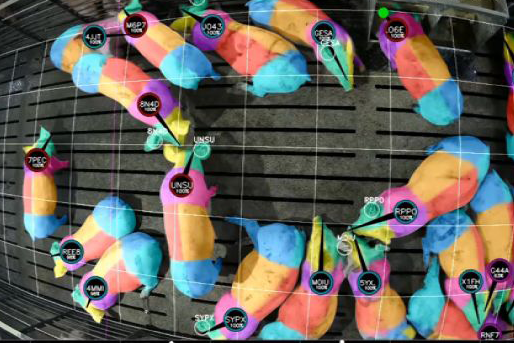Technical Bulletin

Robustness is the ability of an animal to remain healthier and to be more resistant to health and environmental challenges while maintaining high productivity. This is a critical factor in pig production, especially in sows.
The longevity of a sow (length of the productive life of an adult sows) is recognised as both an economic and a welfare concern, and it is determined by her ability reproduce efficiently in different environments. A common performance indicator for sow longevity is the number of parities a female has accumulated before culling (lifespan)(1).
PIC’s genetic program has been successful in continuously improving robustness of the Camborough®, despite being a complex trait with low heritability. This, combined with the Camborough® economic efficiency and reproductive capacity, made her the most successful sow globally.
Since 2014, a regional producer association in Germany evaluates every year extensive data on health and robustness, finding interesting trait trends2. In October 2021 the 2020 results have been published and this is a summary of the results for the last seven years.
LONGEVITY IN DETAIL

When considering the parity at removal (Graph 1), Camborough® dams had on average 1.2 more parities at time of removal than the overall average of genetics; with 1.5 parities more than Danish F1 sows and 1 parity more than Topigs Norsvin sows.
In order to continuously improve the performance of a sow herd, it is important to keep the proportion of involuntary culls as low as possible. Reasons for removals, such as legs and feet, body constitution and condition or behaviour, should occur as seldom as possible. Targeted selection on performance results for removal reasons such as reproductivity (esp. litter size), litter quality and – if applicable – age.
Table 1 shows the removal reasons differentiated by genetic. The Camborough® is the only female where more than 75% of the culling decision is based on selection.
Less than 3% are culled due to leg issues, less than 5% due to litter quality.
Table 1: Removal reasons

ROBUSTNESS, KEY FOR LIFETIME PERFORMANCE
From an economic perspective, two main competitive strategies are followed by producers:
- Maximise output of the sow herd to spread the fixed costs over a large(r) number of piglets
- Focus on production costs per piglet to achieve an optimal balance between input (costs) and output (revenue).
Both strategies are valid if they succeed in achieving their final goal of overall profitability despite the volatile market conditions.
For the second strategy (control of production cost per piglet), the lifetime production capacity of the sow is key, as it represents the total output capacity per sow introduced to the production unit, see table 2 showing calculated lifetime performance using Camborough® as the reference.
Table 2: Calculated lifetime performance per sow3

LEG SCORE AND STRUCTURE, THE FOUNDATIONS FOR LONGEVITY
The correlation of leg quality and the body structure of a pig and its longevity has been proven in numerous studies, and lameness represents the second highest cause for involuntary culling3. PIC early adopted the leg score & structure as one of the priorities for its dam lines, as a result, the genetic trend for this trait improved continuously and is translated in a lower % of removals caused by leg & feet problems in commercial conditions.
CONCLUSION: CAMBOROUGH® DELIVERS LOWEST COSTS PER PIG PRODUCED
The combination of earlier age at mating, higher efficiency in feed usage and superior longevity makes the Camborough® the gold standard in cost of production4 , the ideal choice for pig producers that seek for a reliable sow, easy to manage while providing optimal profitability from farrow to finish.

(1) Developmental factors that influence sow longevity J Anim Sci. 2011 Apr;89(4):1238-45. doi: 10.2527/jas.2010-3175. Epub 2010 Dec 23.
(2) Analysis by “Erzeugerring Westfalen”, producer association in Germany, combined reports for 2014-2020
(3) Culling in served females and farrowed sows at consecutive parities in Spanish pig herds (Porcine Health Management 2018)
(4) own calculations based on 2






